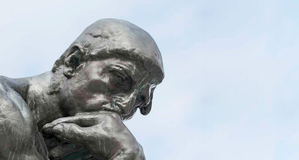Hume's Law and Genetic Engineering: Considering the Possible Implications of Positive Eugenics in Light of Our Horrific Past
By
2020, Vol. 12 No. 10 | pg. 1/1
IN THIS ARTICLE
KEYWORDS
AbstractThe eugenics movement of the 20th century epitomizes the danger that is possible when religion and science coalesce. Grounded in the emerging science of evolution and heredity, social Darwinists superimposed beliefs about social worth, racial superiority, and divine providence onto unbiased scientific research. Eugenicists combined religious and cultural ideas about inferior people with pseudoscientific justifications to impart their beliefs onto others in tangible ways. Vestigial eugenics practices still exist in modern American social systems, and new technologies are paving the way for a potential surge in “positive” eugenic procedures in the form of new advances in genetic engineering. I argue that we would be wise to remember Hume’s Law, that brute facts do not translate to oughts. Although new technological opportunities offer us possibilities to improve many people’s lives, our recent past illustrates the inherent dangers in using science to justify our actions without fully considering the moral value of those actions. The question of how we ought to behave with what science makes available to us requires the deepest and most thoughtful consideration. The eugenics movement of the 20th century epitomizes the danger that is possible when religion and science coalesce. Grounded in the emerging science of evolution and heredity, social Darwinists superimposed beliefs about social worth, racial superiority, and divine providence onto unbiased scientific research. They used the theory of evolution by natural selection to justify social policies, influenced by philosophical and ideological movements (Martin, 2010, p. 52), to the detriment of the “vulnerable and powerless” (Amy & Rowlands, 2018, p. 121). Eugenicists combined religious and cultural ideas about inferior people with pseudoscientific justifications to impart their beliefs onto others in tangible ways.2 Eugenics and racism became “intertwined and mutually reinforcing” (Powell 2002, p. 487), as indigenous people, immigrants, the poor, the disabled, those deemed immoral, and anyone with “perceived weaknesses of character or differences of race, nation or religion” came under attack (Amy & Rowlands, 2018, p. 121). Fueled by racist attitudes and pseudoscience run amok, the American and European eugenics movements produced long-lasting effects that are still being felt today. Recent technologies, such as genetic manipulation, are again opening the door for a resurgence in eugenic practices, but we would be wise to remember Hume’s Law. As explained by Rachel Cohon (2018), David Hume suggested that “no ought-judgement may be correctly inferred from a set of premises expressed only in terms of ‘is.’” In other words, the fact that humans are now becoming able to alter people’s genetic code tells us nothing about what we should do with that information. Although new technological opportunities offer us possibilities to improve many people’s lives, our recent past illustrates the inherent dangers in using science to justify our actions. It is quite plausible that allowing eugenics to return in some form could lead to positive benefits for the entire human race, but I agree with Harvard Law Review’s warning that history tells us “state action will be misguided and will have hidden impermissible motives” (“Regulating Eugenics,” 2008, p. 1599). We must, therefore, think carefully about where our scientific knowledge can lead us and how history demonstrates a tendency to interpret brute facts toward harmful ends. The question of how we ought to behave with what science makes available to us requires the deepest consideration humanly possible, and the conversation must include as much religious, cultural, and ethnic diversity as we can bring to the table.Now that we are coming into an era in which we can produce designer babies and affect our own genetic code, the is-ought question appears on both the individual and societal levels. As Hume reminds us, the fact that we can alter people does not inform us as to whether we should. From Social Darwinism to EugenicsSocial Darwinism arose by 1877 after Charles Darwin published The Descent of Man in 1871. His book described humans as subject to the same evolutionary realities as other animals, and people quickly misconstrued the details of his ideas. Emile Gautier coined the term in his 1880 publication, Le Darwinisme social, in which he argued that social Darwinism was about producing and individualizing the means of well-being (Becquemont, 2011, p. 13). At the time Darwinism had become synonymous with evolution, but most people took evolution to imply “a sociology based on laissez-faire and competition” (Becquemont, 2011, p. 14). Social Darwinism was based on misunderstandings grounded it pre-Darwinian concepts of struggle (Becquemont, 2011, p. 12), and it was an ambiguous concept because the term could refer to either an economic struggle or a race struggle. In the late 19th and early 20th centuries, social Darwinism became most associated with a struggle between groups, peoples, and races (Becquemont, 2011, p. 15).3 English philosopher Herbert Spencer applied natural selection to human societies. He vehemently argued against charity for the poor or disadvantaged because he thought it interfered with the “natural order” (Martin, 2010, p. 55). Spencer related Darwinian theory to a hierarchy of races (Hunter-Doniger, 2017, p. 84), and he conflated natural selection with the “struggle for existence.” He also created the phrase “survival of the fittest” and described the fittest as the “strongest” instead of the most successful (Becquemont, 2011, p. 17). According to Daniel Becquemont (2011), social Darwinism became an extension of preexisting natural theology, which placed war against other people as a general good based on divine providence. In this sense, social Darwinism was a pre-Darwinian ideology that had been “modernized” toward the elimination of people deemed evil (Becquemont, 2011, pp. 17-19). Prior to 1916, social Darwinism was not a common term (Leonard, 2009, p. 39), but Darwin’s theory had become firmly attached to the human social world. The movement adopted five foundational aspects: (i) humans are governed by natural laws, (ii) population pressures create a struggle for existence, (iii) certain physical and mental traits are advantageous, (iv) selection and inheritance will produce and eliminate species, and (v) natural laws extend to human society to include matters of religion and morality (Martin 2010, p. 54). Soon, sociologists began referring to social Darwinism without understanding what Darwin actually meant and analogized social constructs to biological concepts (Becquemont, 2011, p. 15). Eugenics, Greek for “well born,” was an expression of social Darwinism (Coutts & McCarrick, 1995, p. 163). Francis Galton coined the term in 1883 and proposed that humans with “desirable” traits should breed to create a healthy human species free of disabilities and impurities. Galton intended to advance physical and mental qualities to future generations via eugenics. He determined that adults from “inferior” groups had the brain capacity of children (Hunter-Doniger, 2017, p. 85). Other key players in the eugenics movement were James Marion Sims, who conducted gynecological experiments on slave women, and George Fitzhugh, a slave owner who separated society into social classes and advocated enslaving people who were weak in mind or body. Madison Grant refined race theory in his The Passing of the Great Race in 1916, which identified Nordic whites as superior and claimed that the inferior races were outbreeding whites. As these eugenical ideas took hold, America began enforcing eugenics-inspired policies. By the 1890s black people were being castrated and lynched while “assimilation policies” were forced on Native Americans. In 1907 Indiana enacted laws to sterilize the mentally ill, and other states followed suit. Several states began sterilizing women, “sexual delinquents,” and minority prisoners to reduce population growth, as a form of punishment, or as part of eugenics programs meant to improve society. Those subjectively deemed “insane” were the most frequently sterilized. American eugenicists claimed that the State was obligated to control the procreation of people who would need future support, and court decisions in several states granted authority to sterilize for the public good (Amy & Rowlands, 2018, pp. 121-123). In 1924 the United States passed the Immigration Act, which restricted immigration from the “biologically inferior” to prevent diluting the white population (Coutts & MacCarrick, 1995, p. 163). Also in 1924, Virginia enacted the two most radical eugenics laws in the world at the time. The Racial Integrity act defined who qualified as “white,” required racial registration, and classified Indians as “colored.” The Eugenical Sterilization Act forced sterilization of the “feebleminded,” which included those labeled insane, idiots, imbeciles, or epileptic. Both acts were meant to protect white people from being outbred, and they resulted in over 8300 people being sterilized. The United States was not the only country experimenting with eugenics. It became an almost world-wide phenomenon, but Great Britain, the United States, and Germany were leaders in the movement (Coutts & McCarrick, 1995, p. 164).4 Britain’s Brock Report made it legal to sterilize anyone thought to transmit mental disorders (Amy & Rowlands, 2018, p. 121), echoing the US tendency to focus on preventing population growth from the undesirable. Germany, however, would take eugenics to another level. What began as purification became an all-out genocide (Grodin et al., 2018, p. 53). Germany modeled its 1935 Nuremburg Laws on Virginia’s 1924 precedent. The Nuremburg Laws contained more than 120 decrees defining and restricting Jews. Jews were stripped of their civil rights and separated legally, socially, and politically. The Germans believed that Aryans were the most highly evolved people and created a hierarchy of races. Women were treated as a subspecies. Germany incorporated eugenics into all aspects of life and began systematically murdering non-Aryan former citizens. By 1933 more than ½ of German medical professionals were Nazis, and many of them participated in the purging of the “unfit.” Physicians joined the Nazi party “earlier and in larger numbers than any other group of professionals,” 38,000 by 1942 (Grodin et al., 2018, p. 53). The State became the “primary patient” with the quarantine and extermination of inferior people seen as treatment. Patients were sent to eugenic health courts in which panels of physicians determined whether they should be sterilized. Euthanasia was also state-sponsored, became official policy, and was considered to be “mercy killing” that removed low-status people who burdened society. Panels of medical experts decided whether people should be euthanized based on medical questionnaires alone. 5000 children were the initial victims, killed by starvation, exposure, or poison. The next phase consisted of death by injection or gas and resulted in over 300,000 people killed. Medical personnel carried out the procedures and framed their work as “death assistance” or “healing” Grodin et al., 2018, pp. 53-55).5 Those whom people trusted as experts in medical science had become executioners. The Nazi’s went on to exterminate millions of people during the 1930s and 1940s. Even after the Allies defeated the Nazis and discovered their Holocaust, America continued practicing forms of eugenics into the present day (Amy & Rowlands, 2018, p. 125). In the 1940s, poor and minority women under eighteen and as young as nine were sterilized in North Carolina. Until the 1960s, homosexual men were diagnosed as mentally ill and sterilized. In the 1970s thousands of non-white people were coerced into sterilization; Puerto Rico experienced mass-sterilization to control “overpopulation,” black people continued to suffer, and 40% of living Native American women were sterilized along with 10% of the male population (Amy & Rowlands, 2018, p. 125). The list goes on. Why would middle class Americans and Europeans embrace such horrible ideas? Michelle Martin suggests that Calvinist theology may have played a key role. Calvinism presented hard work and moral conduct as signs of a person’s fate, linking poverty with immorality (Martin, 2010, pp. 53-54). Natural theology, which promoted a “war of nature” (Becquemont, 2011, p. 17), had also been ingrained into religious teachings, and Jews, “Gypsies,” and other “undesirables” had been rumored to cause social unrest in Europe for years (Aaronovitch, 2010). Americans were also quite familiar with racism due to the slave trade and relatively recent slaughter of Native Americans. Once the new science of race theory became popular, the white race became equated with the human race (Powell, 2002, p. 487), and non-whites became “scientifically” inferior. Additionally, the abolishment of social programs was another motive for middle class Americans. The middle class wanted to save tax money being “wasted” on welfare recipients. Even the (religiously motivated) Charity Organization Society adopted social Darwinism and only offered help to the poor on the condition that poor people remembered “their place of inferiority” (Martin, 2010, p. 56). Eugenics-based social programs were even touted at the American Museum of Natural History, and Americans received “Fitter Family” awards for purity (“Regulating Eugenics,” 2008, p. 1580). According to Lisa Powell (2002, p. 492), “eugenics was promoted as a way of reducing the long-term costs of poverty by reducing the number of future ‘state wards.’” Medical professionals and social workers played key roles in determining who would suffer. Some may argue that the medical profession is inherently dehumanizing to cope with patients (Grodin et al., 2018, p. 57), but I do not think such an answer even remotely suffices to account for such a wide-spread and focused phenomenon. In my view, people in positions of relative power over socially marginalized groups were able to accept horrendous eugenic practices due to a perfect storm of historical precedent, religious authority, and monetary incentives, all topped off by a belief in empirical justification for their actions based on the new “science.” Contemporary EugenicsSeveral scholars argue that eugenic practices are both still in effect and poised to make a comeback. A common definition of contemporary eugenics is “the study of improvement by genetic means” (Powell, 2002, p. 482). This comes in two varieties, positive and negative, with positive eugenics encouraging the promotion of “superior” genetics, and negative eugenics aimed at restricting “unwanted characteristics” (Coutts & McCarrick, 1995, p. 163). Although the term eugenics has fallen out of favor, the negative form is still alive in American social practices but well-hidden to prevent scrutiny (Powell, 2002, p. 506). Welfare reforms in the 1990s, for example, focused on capping birthrates in marginalized groups, punishing addicts instead of protecting children, and stressing the impacts of problems associated with black communities. Regressive social programs are now hidden in the tax code to prevent the poor from benefiting and reproducing (Powell, 2002, pp. 493-501). Modern programs are punitive in nature with time limits for benefits, work requirements, and behavioral controls (Martin, 2010, p. 58). The death penalty is also disproportionately used on minorities (Powell, 2002, p. 502). According to Powell (2002, p. 494), today’s efforts to reduce birth rates “are nearly indistinguishable from eugenic efforts” of the past. For Martin (2010), social Darwinism is also resurging in contemporary politics. In the post-Kennedy era, people are again blaming the poor for their predicaments. The Regan administration promoted the stereotype of the “Welfare queen,” and the “Christian Right” is pushing for behavioral, moral, and sexual stipulations in welfare reforms (Martin, 2010, p. 51-61). Tracy Hunter-Doniger (2017, pp. 83-88)) points out that even the American education system retains holdovers from the eugenics era, including disregard for social inequalities, faulty standardized intelligence testing, and misconceptions about the benefits of arts education. Aside from negative eugenics-influenced practices still in effect, technology is offering the potential to pursue the positive eugenics route. It is becoming possible to screen for genetic diseases and alter human genes in favor of desirable traits. People today tend to reject the idea of coercive eugenics yet allow for such voluntary procedures (“Regulating Eugenics,” 2008, p. 1578). Some people argue that everyone has the right to enhance their children’s capabilities in hopes of producing a better life, likening access to positive eugenics to access to superior education (“Regulating Eugenics,” 2008, p. 1583). Some also go as far as to say preventing disabilities is “morally obligatory” (“Regulating Eugenics,” 2008, p. 1578). Others disagree. For example, several professors claim that liberal eugenics should not be allowed if it is “harmful or wasteful for everyone,” only available to the rich, and if the risks outweigh the benefits (“Regulating Eugenics,” 2008, p. 1584). Access to positive eugenics seems to be a key concern; with so many vestigial racist or bigoted eugenics policies ingrained in American social systems, there is a distinct likelihood that availability of positive eugenics procedures will unfairly favor specific social groups and ethnicities. In other words, unbalanced access to positive eugenics may very well increase the divide between social classes and ethnic groups, effectively worsening overall social conditions as opposed to improving them. According to Harvard Law Review, state neutrality is at the core of the debate since “liberalism assumes that the citizens exist prior to the state” (“Regulating Eugenics,” 2008, p. 1597). If the State is allowed to mandate genetic interventions, then it can create the people it wants to govern, and history has clearly shown that state regulation in areas related to social worth or personal traits is a bad idea (“Regulating Eugenics,” 2008, pp. 1593-1599). Even individual access to genetic enhancement could lead to exacerbating “inequalities between the rich and the poor” (“Regulating Eugenics,” 2008, p. 1590), or issues related to personal civil rights. At first glance, I would love to support implementing any and all technological advancements able to improve lives, prevent disease, or increase lifespans. That said, the potential second and third-order effects of implementing even positive eugenics procedures make the is-ought question extremely difficult to answer — just because we can “improve” people’s genetics does not necessarily mean we should. ConclusionIn my view, social Darwinism and the eugenics movement resulted from a failure to appreciate Hume’s Law combined with bad science and modern superstition. It was an attempt to translate perceived scientific facts into prescriptions for morality. As Jean-Jacques Amy and Sam Rowlands points out, social Darwinism was based on wrong ideas about the mechanisms of heredity and deviant behaviors (Amy & Rowlands, 2018, p. 127). Eugenicists combined these misconceptions about the science of natural selection with pseudoscientific justifications for deplorable actions. They misconstrued adaption to the environment as a progression toward some kind of objective human perfection. They identified the “perfect” or most “desirable” human being with arbitrary descriptions grounded in religious beliefs and the othering of people from different social and cultural backgrounds. Those in power identified intelligence, worth, and proper motivation with the people who looked and acted like themselves. Morally meaningless traits such as skin color combined with presumptions about how and why people arrived at particular social statuses determined who should or should not be allowed to procreate or even to live. Eugenics was considered “the leading, cutting-edge science,” capable of improving “hereditary qualities” (Grodin et al., 2018, p. 54). Essentially a form of modern magic, eugenics effectively offered a method for translating racially motivated religious desires into reality. For those who believed, eugenics was grounded in “truth” strong enough to demand sacrifices for the common good, a good that was supposedly backed by scientific data. As US Supreme Court Judge Oliver W. Holmes Jr. put it, eugenics laws were analogous to the wartime draft — everyone was expected to do her part (Grodin et al., 2018, p. 54). The US eugenics movement was fueled by white supremacy developed over centuries of racial exploitation. American policies aimed at abolishing minorities and those of lesser social status by ensuring that they would not procreate. German eugenics followed American practices but took them to the extreme. America largely stopped at sterilization. Germany murdered millions. Both countries used pseudoscientific methods to determine racial and social worth. Both cloaked their bigotry in medicine or science, and both used political, governmental, and religious institutions to enact their agendas. Aside from the utter lack of empathy, a major problem with social Darwinism is that evolutionary “improvement” is subjective. The actual science of evolution tells us that humans are a product of natural selection, but organisms adapt to their current environment — not toward a superior being of some kind. When the environment changes, the organisms that were previously the fittest are replaced by creatures with different traits. We know this type of evolution occurs, but the scientific fact does not translate to prescriptions for behavior. That is another question entirely and one that largely depends on context. Eugenicists assumed that they alone knew what constituted the best traits for humans and that the science of evolution demanded what to do with the information it provided. The science, however, does not answer questions about who determines what human characteristics are “best” or who should decide the fates of others. As Stephen J. Gould (1997) describes, these two realms are the nonoverlapping magisteria between science and religion. For Gould, the magisterium of science belongs to the empirical universe while the magisterium of religion concerns moral reasoning and value. Science includes our best ideas about what the world is made of and how it works the way it does. Religion involves how we process that information to derive deeper meaning about our existence. Eugenicists conflated the two by assuming that the mere scientific fact that organisms evolve over time via natural selection leads to the conclusion that some humans are racially superior to others and that the inferior groups should be culled. Gould warns us to keep science separate from questions of religion and morality to prevent such fallacious reasoning. Now that we are coming into an era in which we can produce designer babies and affect our own genetic code, the is-ought question appears on both the individual and societal levels. As Hume reminds us, the fact that we can alter people does not inform us as to whether we should. Those decisions are up to us as individuals, but they also affect humanity as a whole. I remain unconvinced either way as to whether we should or should not allow free reign to those who would partake in positive eugenics. I will side with Harvard Law Review, however, in saying that eugenics should not be a matter of the state. I think the question must remain at the individual level because forcing a decision on society writ large or on any specific social groups will inevitably lead to one privileged group subordinating the others.6 For a time, the cost of positive eugenics will likely advantage the rich over the poor, but access to technology tends to equalize over time. The bottom line is that decisions related to genetic procedures must be a matter of personal choice available to everyone, regardless of social status or ethnicity. This is necessary to prevent any one group of people from being able to realize social dominance over all others. I worry that allowing such a powerful tool to remain in the hands of a few may transform a potentially life-saving technology into just another excuse for genocide. ReferencesAaronovitch, D. (2010). Voodoo Histories: The Role of the Conspiracy Theory in Shaping Modern History. London: Penguin Books, Ltd. Amy, J-J., & Rowlands, S. (2018). “Legalised Non-Consensual Sterilisation — Eugenics Put into Practice Before 1945, and the Aftermath. Part 1: USA, Japan, Canada, and Mexico.” The European Journal of Contraception & Reproductive Health Care 23(2), 121-129. Becquemont, D. (2011). “Social Darwinism: From Reality to Myth and From Myth to Reality.” Studies in History and Philosophy of Biological and Biomedical Sciences 42, 12-19. Cohon, R. (2018, Fall Edition). “Hume’s Moral Philosophy.” Edward N. Zalta (ed.). The Stanford Encyclopedia of Philosophy. https://plato.stanford.edu/ Coutts, M. C., & McCarrick, P.M. (1995). “Eugenics.” Kennedy Institute of Ethics Journal 5(2), 163-178. Gould, S.J. (1997). “Nonoverlapping Magisteria.” Natural History 106(2), 16-22. Grodin, M A., Miller, E.L., & Kelly, J.I. (2018). “The Nazi Physicians as Leaders in Eugenics and ‘Euthanasia’: Lessons for Today.” American Journal for Public Health 108(1), 53-57. Hunter-Doniger, T. (2017). “The Eugenics Movement and its Impact on Art Education in the United States.” Arts Education Policy Review 118(2), 83-92. Leonard, T. C. (2009). “Origins of the Myth of Social Darwinism: The Ambiguous Legacy of Richard Hofstadter’s Social Darwinism in American Thought.” Journal of Economic Behavior & Organization 71,37-51. Martin, M. E. (2010). “Philosophical and Religious Influences on Social Welfare Policy in the United States: The Ongoing Effect of Reformed Theology and Social Darwinism on Attitudes Toward the Poor and Social Welfare Policy and Practice.” Journal of Social Work 12(1), 51-64. Novella, S. (2012). Your Deceptive Mind: A Scientific Guide to Critical Thinking Skills. Audiobook and Course Guidebook. The Great Courses. Powell, L. (2002). “Eugenics and Equality: Does the Constitution Allow Policies Designed to Discourage Reproduction among Disfavored Groups?” Yale Law & Policy Review 20(2), Symposium: Race, Values, and the American Legal Process: A Tribute to A. Leon Higginbotham Jr., 481-512. “Regulating Eugenics.” (2008). Harvard Law Review 121(6), 1578-1599. Sagan, C. (1997). The Demon-Haunted World: Science as a Candle in the Dark. London: HEADLINE BOOK PUBLISHING. Endnotes2.) What counts as pseudoscience can be difficult to define. Carl Sagan (1997, p. 199) offers a “Baloney Detection Kit” to help us narrow it down. According to Sagan, pseudoscience generally consists of non-falsifiable hypotheses and fallacious reasoning that is not open to scrutiny. Steven Novella (2012, pp. 132-133) describes pseudoscience as referring to “beliefs and practices that claim to be scientific but lack the true method and essence of science … the methods are so flawed that the entire endeavor is suspicious.” Novella goes on to say that pseudoscientists “only look for confirming evidence and will avoid disconfirming evidence.” 3.) Lester War called racial struggle the original law of society (Becquemont, 2011, p. 16). 4.) Japan also adopted strict eugenics programs a bit later on. 5.) Nazi medical professionals sterilized 360-375k people between 1933-1939 (Grodin et al., 2018, p. 54). 6.) Powell (2002, p. 484) argues that eugenics is about subordination, or “the ideas that some groups are so much less valuable than others that the world would be better off if their numbers were reduced or eliminated.” Suggested Reading from Inquiries Journal
Inquiries Journal provides undergraduate and graduate students around the world a platform for the wide dissemination of academic work over a range of core disciplines. Representing the work of students from hundreds of institutions around the globe, Inquiries Journal's large database of academic articles is completely free. Learn more | Blog | Submit Latest in Philosophy |


















